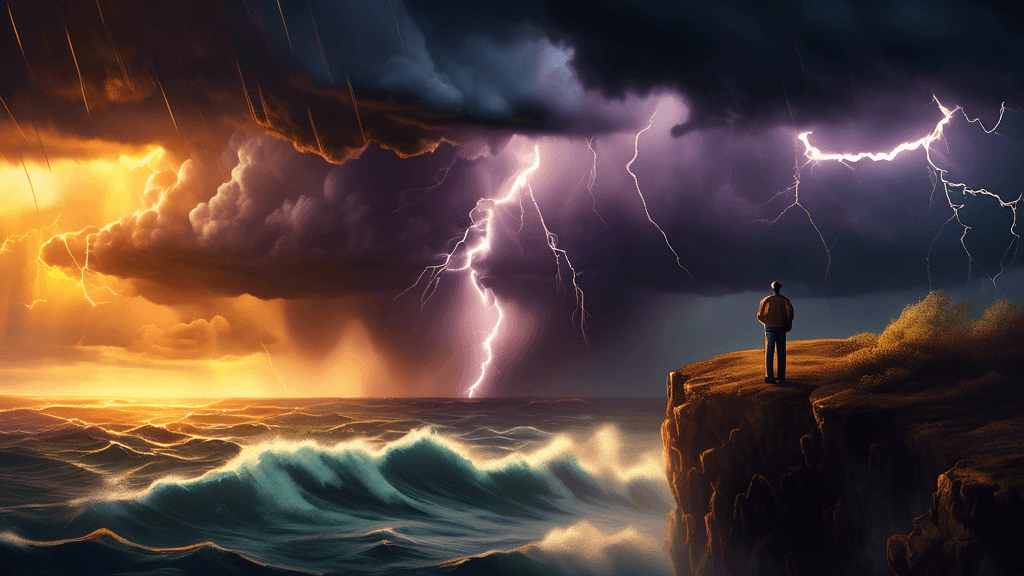
Capturing the Fury: Using Weather to Enhance Photography
Share
Introduction to Weather Photography
Photography, as an art form, strives to capture fleeting moments, freeze emotions, and crystallize the beauty and ferocity of nature. Among the many subjects photographers pursue, weather phenomena stand out for their power to add drama, emotion, and awe to a photo. But what makes weather photography uniquely compelling and how can photographers use different weather conditions to enhance their work?
Understanding the Appeal of Weather in Photography
Weather elements like storms, fog, rain, and snow can transform ordinary landscapes into breathtaking scenes. They serve as natural filters and mood enhancers in the lens of a photographer. But what is it about inclement weather that captures the imagination of both the photographer and their audience?
- Emotional Impact: Weather dramatically affects the ambiance of a scene. A storm can convey turmoil, while a misty morning might evoke calmness and mystery.
- Visual Effect: Elements such as raindrops, snowflakes, and fog can alter the depth and perspective of images, adding layers and texture.
- Lighting: The interplay of light with clouds and precipitation can create a unique, ever-changing lighting that is impossible to replicate artificially.
- Dynamic Scenes: Weather is dynamic and unpredictable, which means that it can change a scene completely in just a few minutes, offering ever-changing opportunities to capture a unique photograph.
Techniques for Capturing Different Weather Conditions
Each type of weather condition presents unique challenges and opportunities. How can photographers adapt and use these conditions to their advantage?
1. Storm Photography
Storms, particularly those that involve lightning, can be spectacular to capture, but they require careful planning and safety precautions. High winds, heavy rain, and lightning can be dangerous. A sturdy tripod and a remote camera trigger are essential tools. Long exposure settings can capture the path of lightning bolts, turning a split-second flash into a striking image.
The key to capturing lightning is timing and safety. Always ensure you are at a safe distance and sheltered, noted John Smith, an esteemed storm photographer.
2. Capturing Rain and Fog
Rain adds a reflective surface to roads and paths, which can be used to mirror lights and sky. A faster shutter speed can capture individual raindrops, whereas a slower one can create a sense of movement and flow. Fog obscures and softens landscapes, making it ideal for creating mystical and ethereal images. Manual focus might be more effective in foggy conditions since autofocus can become unreliable.
3. Snow and Ice Photography
Snow and ice reflect light differently than other surfaces, offering opportunities for high-contrast images. Early morning or late afternoon light can create long shadows in the snow, adding depth and interest to a composition. Snow also acts as a natural reflector, bouncing light into shadows and creating more even lighting across your subject.
Environmental Considerations and Conservation
While capturing the raw beauty of nature, photographers also bear a responsibility to their subjects. This involves adhering to local regulations, respecting wildlife, and practicing minimal impact principles. Environmental awareness when photographing natural events—not just animals or plants—is crucial in fostering a healthier relationship between art and nature.
Conclusion
Weather photography not only highlights the photographer's skill in harnessing natural elements but also serves as a vivid reminder of nature’s power. Understanding and implementing diverse techniques tailored to different weather conditions can greatly enhance the impact of photographic work. Whether through the fury of a storm, the whisper of falling snow, or the silent shroud of fog, each element offers a new lens through which we can view the world.
Will you step into the storm equipped with your camera, ready to capture its awe-inspiring beauty?





